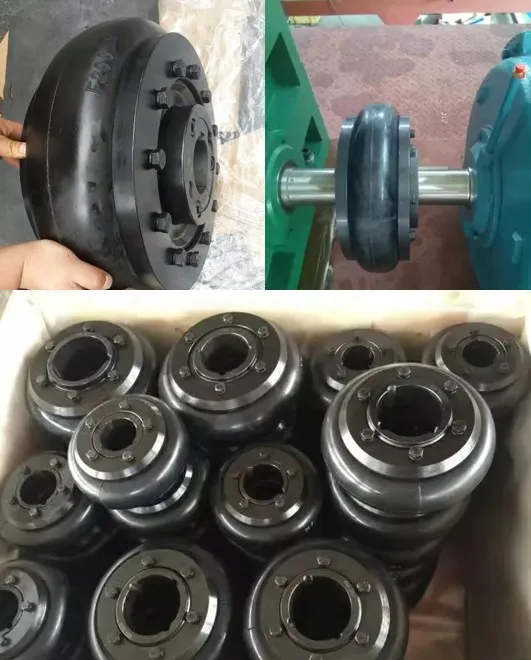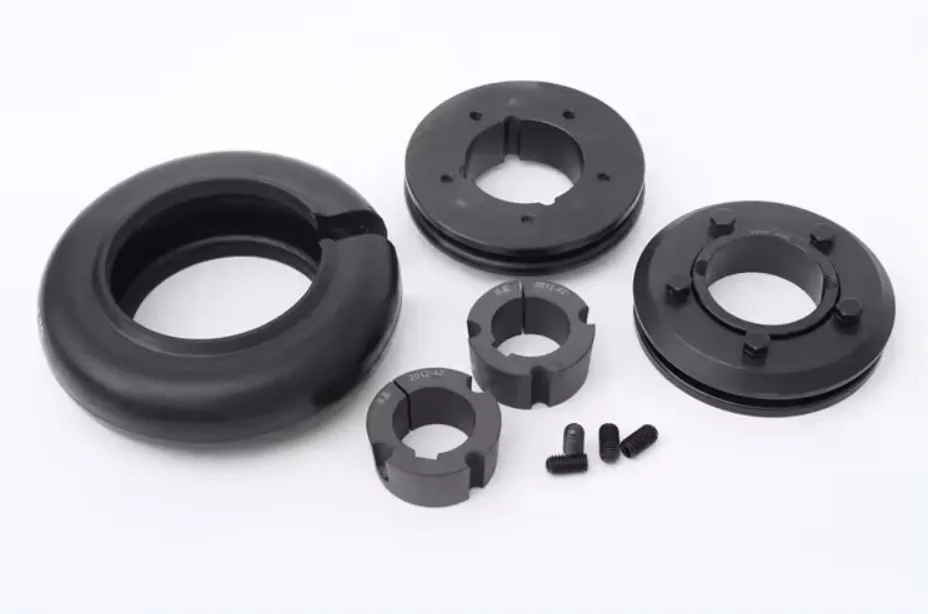rubber coupling for communication systems
Introduction
A rubber coupling is an essential component used in communication systems to connect two shafts and transmit torque while accommodating misalignment and vibration. This article explores the various aspects of rubber couplings for communication systems, including their functionality, types, and applications.

Types of Rubber Couplings
1. Resilient Rubber Couplings
Resilient rubber couplings are designed to absorb shock, vibration, and compensate for misalignment in communication systems. They are highly flexible and offer excellent torque transmission capabilities.
2. Flex-Rigid Rubber Couplings
Flex-rigid rubber couplings provide a balance between flexibility and rigidity, making them suitable for applications that require both torque transmission and misalignment compensation. They offer high torsional stiffness and damping properties.
3. Torsionally Rigid Rubber Couplings
Torsionally rigid rubber couplings are designed to provide maximum torque transmission capabilities while minimizing angular and axial misalignments. They offer high torsional stiffness and are ideal for high-speed communication systems.
4. Elastomeric Couplings
Elastomeric couplings are made of a high-performance elastomer material that offers exceptional flexibility, damping properties, and misalignment compensation. They are commonly used in communication systems where shock and vibration mitigation is critical.
Applications of Rubber Couplings in Communication Systems
1. Antenna Systems
Rubber couplings are used in antenna systems to connect the antenna to the transmission line and allow for misalignment compensation caused by wind loads and environmental factors.
2. Satellite Communication Systems
Rubber couplings play a crucial role in satellite communication systems by connecting various components, such as the motor, gearbox, and antenna, while accommodating misalignment and vibration.
3. Fiber Optic Communication Systems
In fiber optic communication systems, rubber couplings are utilized to connect the fiber optic cables, ensuring precise alignment and minimizing signal loss due to misalignment.
4. Radio Communication Systems
Rubber couplings are used in radio communication systems to connect the rotating parts, such as the antenna rotor, to the stationary parts, allowing for smooth rotation and misalignment compensation.
5. Telecommunication Towers
Telecommunication towers rely on rubber couplings to connect the tower segments, absorb wind-induced vibrations, and reduce stress on the overall structure.

How to Install Rubber Coupling
Installing a rubber coupling is a straightforward process that requires a few basic steps:
1. Inspect the rubber coupling for any damage or defects before installation.
2. Ensure that the shafts to be connected are clean and free from debris or contaminants.
3. Align the shafts properly and slide the rubber coupling onto the shaft ends.
4. Tighten the coupling bolts or screws evenly to the manufacturer’s specified torque.
5. Perform a visual inspection to ensure that the coupling is securely installed and properly aligned.
Choosing or Customizing the Right Rubber Coupling
When selecting or customizing a rubber coupling for your specific application, consider the following parameters and factors:
1. Torque Capacity: Determine the maximum torque that the coupling needs to transmit without experiencing failure or slippage.
2. Misalignment Compensation: Evaluate the amount of misalignment that the coupling should be able to accommodate based on the system’s requirements.
3. Environmental Conditions: Consider the temperature, humidity, and chemical exposure that the coupling will be subjected to, and choose a material that can withstand these conditions.
4. Damping Properties: Assess the level of shock and vibration attenuation required in the system, and select a rubber coupling with appropriate damping capabilities.
5. Space Limitations: Take into account any space restrictions or dimensional limitations in the system design, and choose a compact and efficient rubber coupling.

About HZPT
HZPT is a modern enterprise located in Hangzhou, Zhejiang Province. We specialize in the research, development, production, and international trade of coupling products. With a focus on high-tech development, international trade, industrial investment, and network development, we are dedicated to becoming a globally influential international group.
Our company offers a wide range of coupling products, including drum couplings, pin bush couplings, disc couplings, universal couplings, star couplings, expansion couplings, membrane couplings, tire couplings, and more. We have a comprehensive and scientific quality management system, along with our own technology development and testing department. Our certifications include CQC, ISO, CE, and more.
At HZPT, we provide excellent sales services and technical support to our customers. With a customer-centric approach and a commitment to teamwork and innovation, we have established partnerships with over a hundred companies. We strive to develop together with our customers, upholding our core values of integrity and customer satisfaction.
